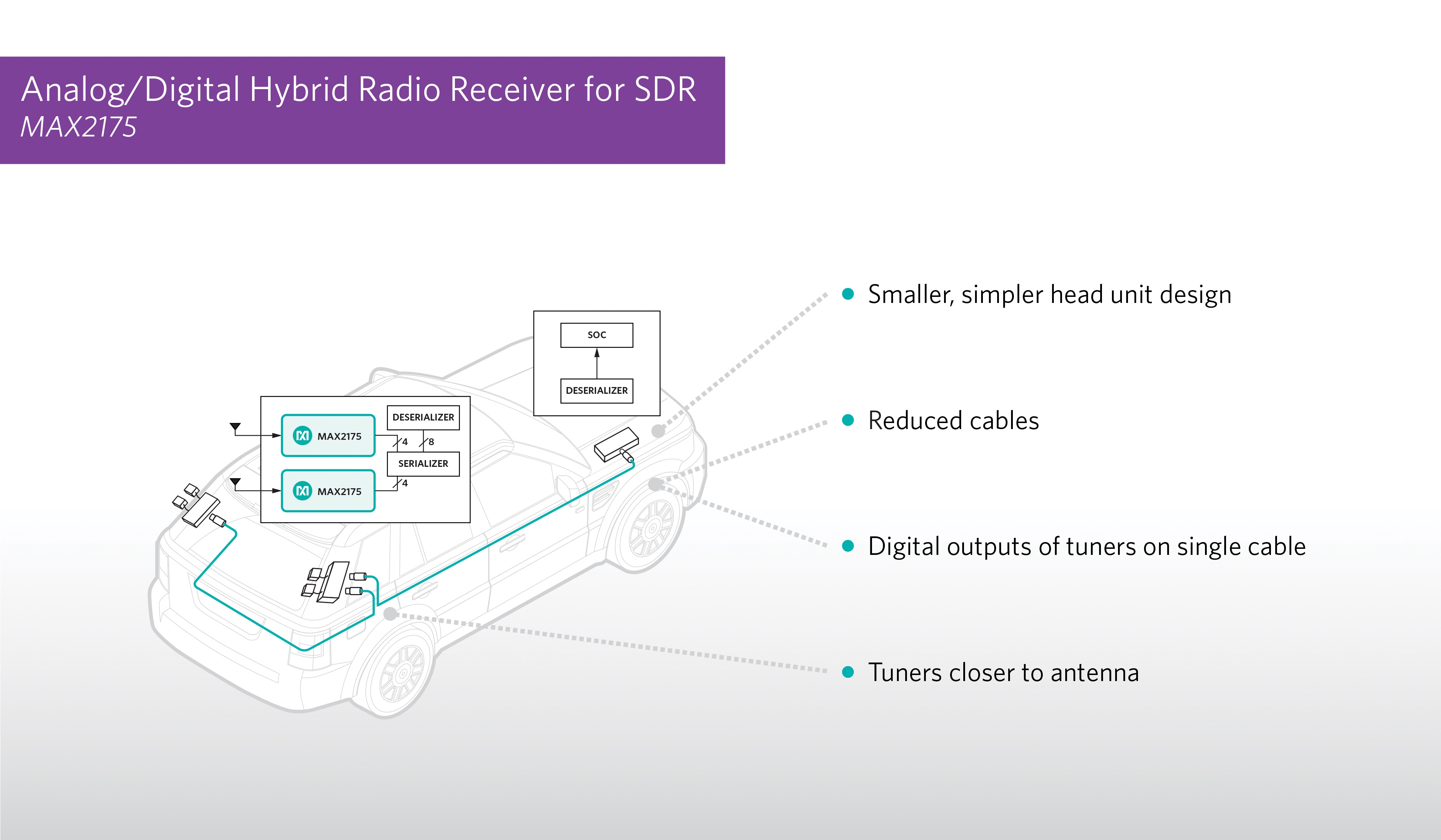원격 튜너 기술로 전세계 차량 라디오 표준 지원한다
기사입력 2017.01.23 18:55
맥심, WBR 기술로 유연하고 확장성 높은 SDR 구현 성공
자동차 헤드유닛 설계 단순화하고 케이블 수 줄여
전세계 자동차 라디오를 지원하는 표준은 제각각이다. 이에 라디오 튜너를 개발하는 업체들도 각 표준에 맞는 제품을 공급해 왔다. 그렇다면 표준이 다르다고 하드웨어를 다시 설계해야 하는가? 이제 그럴 필요는 없어졌다. 소프트웨어 정의 무선(SDR, Software Defined Radio) 기술이 있기 때문이다.
하지만 SDR만 적용한다고 최적의 설계를 다했다고 말할 수는 없다. 여기엔 또 다른 장애가 존재하기 때문이다. 소프트웨어는 여전히 일부 하드웨어 플랫폼 상에서 구동되어야 하기에 각각의 프론트엔드를 가진 베이스밴드 신호처리 코어를 동일 칩에 두고 각각 AM과 FM을 처리해야 한다. 즉 무거운 SDR 설계가 될 수 밖에 없는 것이다.
▲ 자동차의 스마트 멀티미디어 터치스크린 시스템
다시 말해 프론트엔드 튜너와 베이스밴드 프로세서를 통합한 전통적인 무선 수신기는 표준 수만큼 라디오 수신기 칩이 있어야 하고, 또한 이를 해결하기 위해 구현한 기존의 SDR는 각각의 베이스밴드 신호처리 코어 때문에 무거운 설계가 불가피하다. 이에 혁신적인 자동차용 솔루션을 꾸준히 개발해 온 맥심 인터그레이티드의 SDR 기술은, 튜너 설계 엔지니어의 고민을 해결해 주는데 충분해 보인다.
이 회사는 자동차의 헤드 유닛 설계를 단순화하고 케이블 수를 줄여주는 원격 튜너(tuner) 솔루션을 발표하면서 차량의 하드웨어 변경 없이 소프트웨어 업데이트만으로 전세계 라디오 표준을 지원할 수 있다고 밝혔다. 물론 SDR 구현이 이상적으로 이뤄지려면 특정 표준과 관련된 어떤 신호라도 SDR 기법을 이용해 처리할 수 있어야 하는 전제조건이 따른다. 이상적인 SDR 방식은 다양한 기법과 진화하는 표준에 따라 설계를 변경할 수 있어야 한다.
하드웨어 변경 없이 소프트웨어 업데이트만으로 전세계 표준 지원
맥심이 제안하는 WBR(World Band Radio) 기술은 이에 대한 해답을 찾는데 실마리를 제공한다. SDR에 따른 유연성을 극대화하기 위해 더욱 유연한 아키텍처를 부여한 이 기술을 이용하면 모든 주요 아날로그 및 디지털 라디오 표준을 실행할 수 있는 독립형 프론트엔드 튜너 설계가 가능하다. 이를 가능케 한 것은 강력한 멀티코어 프로세서 덕분이다. 시스템 내 이미 존재하는 멀티코어 애플리케이션 프로세서를 보다 효율적으로 이용함으로써 각각의 베이스밴드 신호처리 코어를 얹을 필요없이 확장 가능한 설계가 가능했다.

▲ MAX2175
맥심 원격 튜너 솔루션은 프론트엔드(RF to Bits)가 장착된 MAX2175 아날로그/디지털 하이브리드 라디오 수신기, MAX96708 14비트 GMSL 직병렬변환기(deserializer), MAX96711 14비트 GMSL 직렬변환기(serializer), MAX15027 1A LDO 선형 레귤레이터, 동기식 벅 컨버터(MAX20002 36V, 2A) 제품으로 구성된다. 이로써 맥심은 RF, SerDes, 전력 부품을 모두 포함하는 유일한 솔루션을 제공하게 됐다.
맥심의 이번 튜너 솔루션은 기존 고집적 SDR 솔루션을 보완한 유연성과 전세계 어떤 표준이라고 지원할 수 있는 확장성이라는 두 마리 토끼를 잡는데 성공했다.
김수지 기자
많이 본 뉴스
[열린보도원칙] 당 매체는 독자와 취재원 등 뉴스이용자의 권리 보장을 위해 반론이나 정정보도, 추후보도를 요청할 수 있는 창구를 열어두고 있음을 알려드립니다.
고충처리인 장은성 070-4699-5321 , news@e4ds.com




.png)




